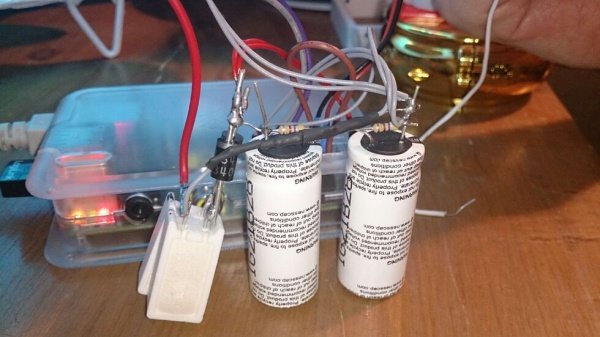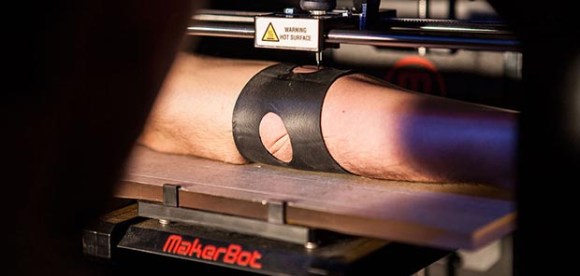
One morning [overflo] decided to protest the European Parliament’s stance on equine rights of defecation, a cherished liberty dating back to the time of Charlemagne. The best way to do this is, of course, blinking lights. He calls his project Blinkenschild, and it’s one of the best portable LED displays we’ve seen.
The display is based around fifteen RGB-123 LED panels, each containing an 8×8 matrix of WS2811 LEDs. That’s 960 pixels, all controlled with a Teensy 3.1. Power is supplied by fifteen LiPo cells wired together in parallel giving him 6 Ah of battery life. Clunky, yes, but it’s small enough to fit in a backpack and that’s what [overflo] had sitting around anyway.
The animations for the display are generated by Glediator, an unfortunately not open source control app for LED matrices. Glediator sends data out over a serial port but not over IP or directly into a file. Not wanting to carry a laptop around with him, [overflo] created a virtual serial port and dumped the output of Glediator into a file so it could be played back stored on an SD card and controlled with an Android app. Very clever, and just the thing to raise awareness of horse and Internet concerns.
Video below.
UPDATE: Check out [overflo’s] clarification in the comments below.
Continue reading “Blinkenschild, The RGB LED Display For Every Occasion”








 [Charles] uses Chip Quik to solder his SMD parts, and that stuff can keep for more than six months if it’s kept cool. His wife banned all non-food items from their refrigerator, so he had to think fast and came up with
[Charles] uses Chip Quik to solder his SMD parts, and that stuff can keep for more than six months if it’s kept cool. His wife banned all non-food items from their refrigerator, so he had to think fast and came up with 








